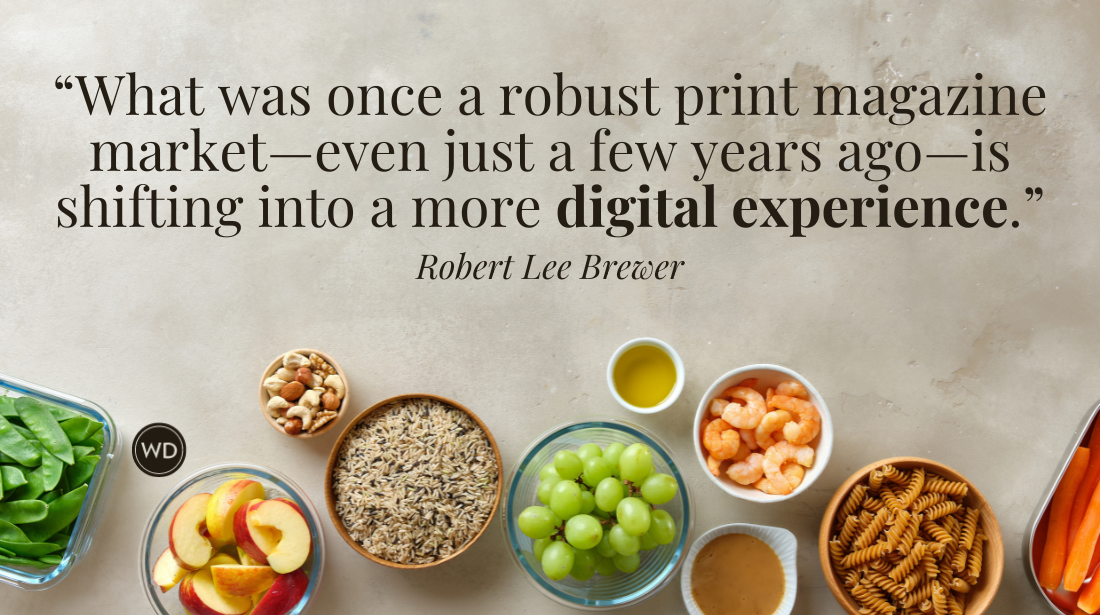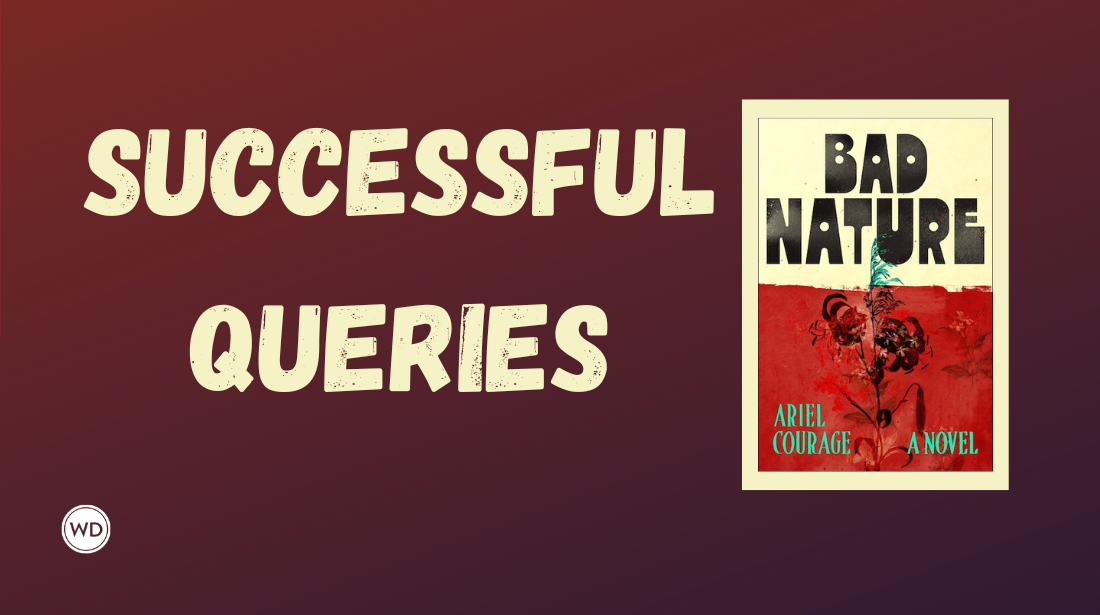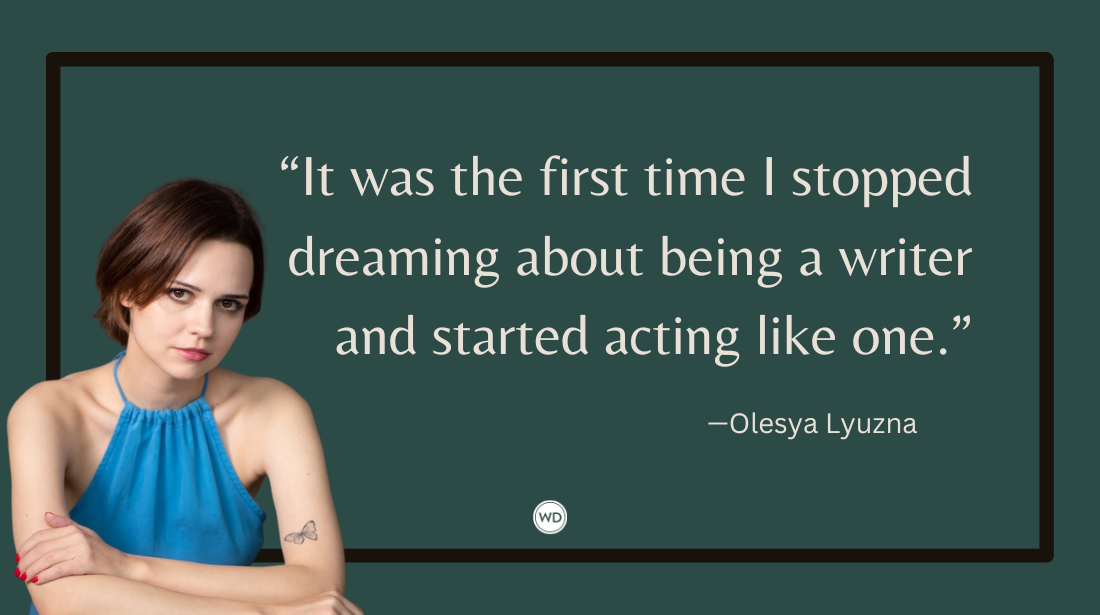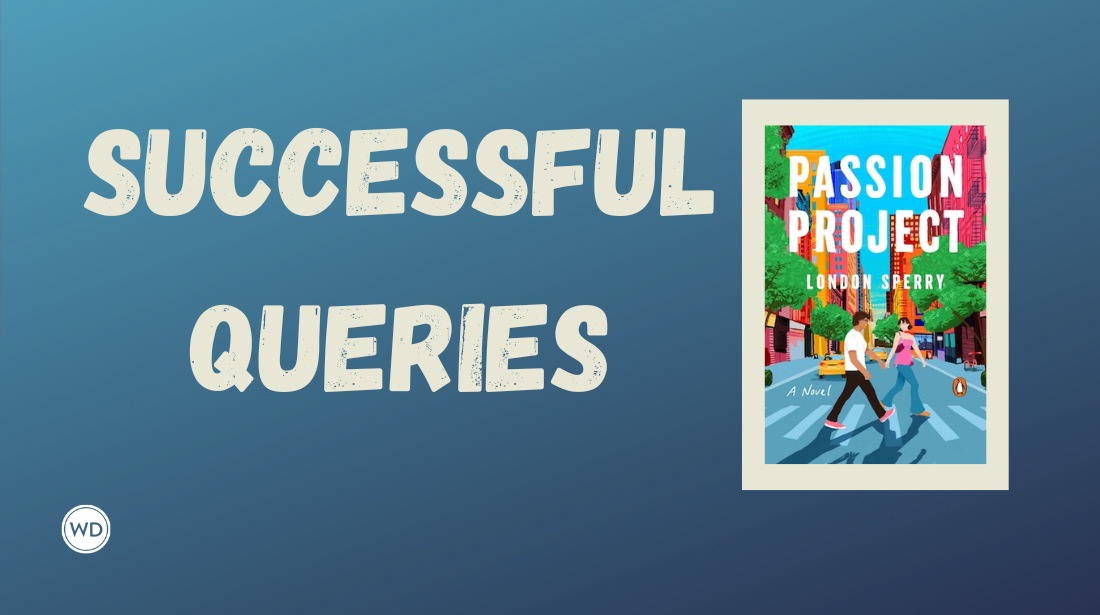Using Recipes in Your Non-Cookbook Manuscript: What You Need to Know
Want to make your story more savory? On The Market author Audrey Wick suggests including the recipes your characters devour.
Want to make your story more savory? On The Market author Audrey Wick suggests including the recipes your characters devour.
Food and literature have always had a strong relationship. For readers, it can be quite a treat to encounter a description, cooking tip, or recipe tucked into a manuscript. For writers, using food can be a fun way to bring experiences alive and connect with audiences off the page.
Two of the first books which helped me see the power of food in published works that were not exclusively marketed as cookbooks were Laura Esquivel’s Like Water for Chocolate and Maya Angelou’s Hallelujah! The Welcome Table: A Lifetime of Memories with Recipes. Both are compulsively readable texts whereby, if the recipes were deleted, the book’s strength would diminish.
I write in the women’s fiction and romance genres, so my readers expect stories. Still, my latest books On the Market and Off the Market have food-centric plots that feature brothers who own a BBQ market, so smoky and saucy descriptions are peppered through the text. As a bonus for readers, my publisher and I decided to include recipes at the back of the book that tie to the narrative. Doing so helped me stretch my creative skills, but it wasn’t without the need for questions and research.
If you want to give your manuscript—whether fiction or nonfiction—a tasty boost, consider whether some type of recipe inclusion might be appropriate. As you do, here are aspects to weigh:
- Decide on placement. Do you want to include recipes in the body of your manuscript, at the beginning of each chapter, or at the end in an appendix? Or maybe you want to save these exclusively for digital distribution via a newsletter or social media channel. The volume of content you have to share and knowing your readers may help you decide on placement, but also remember that your writing should be front and center.
- Be consistent in style. Do you want to include cookbook-style recipes that list ingredients and steps, or would you prefer to write in a more narrative style like a food blogger? Do what makes sense for your personal writing voice, but also keep your audience in mind. They might get frustrated if they’re not expecting the content, so be mindful of your genre and your brand.
- Don’t plagiarize. Do you want to worry about infringement? The answer is probably “no.” While U.S. copyright law provides immediate protection to your original written work regardless of length and scope, the Copyright Act does not enumerate “recipes” on the list of authorship categories; they seem to fall under a “procedure, process, [or] system” (see law.cornell.edu/uscode/text/17/102). Still, be respectful of others’ writing. Ultimately, recipes you create are yours, but published recipes are someone else’s property.
- Ask for attribution. Do you have friends and family who might enjoy being mentioned in your book? Ask around for their tried-and-true foodie formulas, and then experiment in adapting their content. For instance, I don’t cook with much salt, so I eliminated it from a recipe my sister passed to me for inclusion in my latest book. Then, don’t forget to mention them with an “inspired by” or “adapted from” note.
- Advertise sensibly. How do you want your readers to discover your recipes? Whether you include a cover blurb, subtitle, appendix, or place it in metadata, you can then use that to help you market and reach readers. Depending on your audience and genre, you may be able to target food blogs, cooking magazines, or create video content.
As writers, our creativity propels us. So if you want to try something new, let that creativity launch a new experiment. Including recipes, tips, and cooking tricks as bonus material in your manuscript might be a way to set your writing apart and can be an exciting opportunity to connect with readers as they delight in discovering them.
Have you thought about tying food to your work-in-progress? Or have you successfully launched a book that includes recipes? Share your experiences in the comments below.
Writer's Digest Annual Conference | New York City
Audrey Wick is an author with Harlequin (Harper Collins) and full-time professor of English at Blinn College (Texas). She has authored educational content in college textbooks for Cengage and been a repeat contributor to Writer's Digest, Woman's World, and Chicken Soup for the Soul, with stories also appearing in various literary journals. Audrey believes the secret to happiness includes lifelong learning and good stories. But travel and coffee help. She has journeyed to over twenty countries—and sipped coffee in every one. See photos on her website audreywick.com and follow her on X and Instagram @WickWrites.








